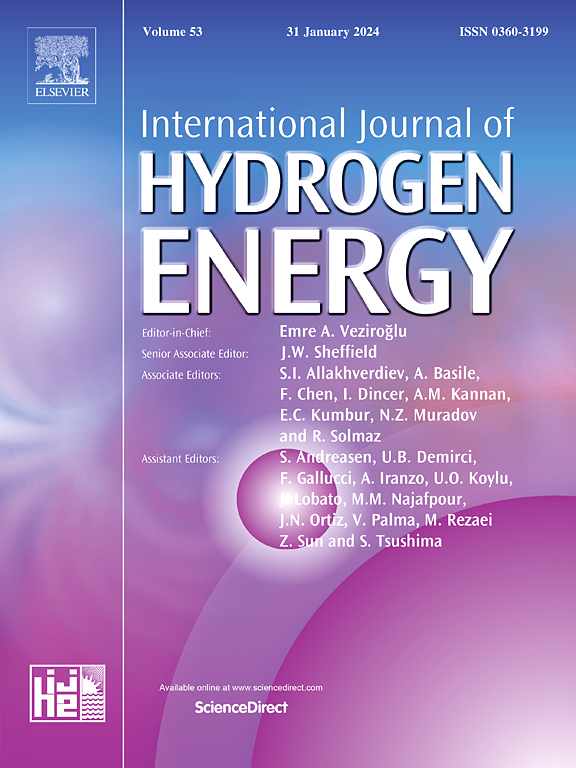Carbon nanotube coated with FeMoO4 composite catalyst for electrochemical Nitrogen reduction reaction to Ammonia at Ambient Conditions
IF 8.1
2区 工程技术
Q1 CHEMISTRY, PHYSICAL
引用次数: 0
Abstract
The mild reaction conditions, simple process, and clean raw materials make electrochemical nitrogen reduction reaction to ammonia (NRR) a promising method for producing this crucial substance for human life. The proposed catalysts have been shown to reduce the reaction barrier and improve catalytic efficiency, making them an excellent choice for this process. Carbon nanotubes coated FeMoO4 (FeMoO4@CNTs) nanorods are a highly efficient catalyst for fixing N2 to NH3. Carbon nanotubes doped FeMoO4 improve the efficiency of electrocatalytic NRR by increasing their active surface. A superior ammonia yield of 18.49 μg h−1·mg·cat−1 at −0.65 V was obtained in a 0.1 mol L−1 Na2SO4 solution, with a corresponding Faraday efficiency of 16.14%. The response of the experimental system to environmental factors was also investigated. The data clearly indicates that raising the temperature does not enhance the yield of ammonia. This reaction system is optimal for neutral or alkaline environments.
碳纳米管包覆 FeMoO4 复合催化剂用于环境条件下电化学氮还原氨反应
电化学氮还原氨反应(NRR)具有反应条件温和、工艺简单、原料清洁等优点,是生产人类生活中重要物质的一种可行方法。研究表明,所提出的催化剂可以降低反应障碍,提高催化效率,是该工艺的最佳选择。碳纳米管包覆 FeMoO4(FeMoO4@CNTs)纳米棒是将 N2 固定为 NH3 的高效催化剂。掺杂碳纳米管的 FeMoO4 通过增加其活性表面提高了电催化 NRR 的效率。在 0.1 mol L-1 Na2SO4 溶液中,当电压为 -0.65 V 时,氨产量为 18.49 μg h-1-mg-cat-1 ,相应的法拉第效率为 16.14%。实验系统对环境因素的反应也进行了研究。数据清楚地表明,提高温度并不能提高氨的产量。该反应系统最适合中性或碱性环境。
本文章由计算机程序翻译,如有差异,请以英文原文为准。
求助全文
约1分钟内获得全文
求助全文
来源期刊

International Journal of Hydrogen Energy
工程技术-环境科学
CiteScore
13.50
自引率
25.00%
发文量
3502
审稿时长
60 days
期刊介绍:
The objective of the International Journal of Hydrogen Energy is to facilitate the exchange of new ideas, technological advancements, and research findings in the field of Hydrogen Energy among scientists and engineers worldwide. This journal showcases original research, both analytical and experimental, covering various aspects of Hydrogen Energy. These include production, storage, transmission, utilization, enabling technologies, environmental impact, economic considerations, and global perspectives on hydrogen and its carriers such as NH3, CH4, alcohols, etc.
The utilization aspect encompasses various methods such as thermochemical (combustion), photochemical, electrochemical (fuel cells), and nuclear conversion of hydrogen, hydrogen isotopes, and hydrogen carriers into thermal, mechanical, and electrical energies. The applications of these energies can be found in transportation (including aerospace), industrial, commercial, and residential sectors.
 求助内容:
求助内容: 应助结果提醒方式:
应助结果提醒方式:


